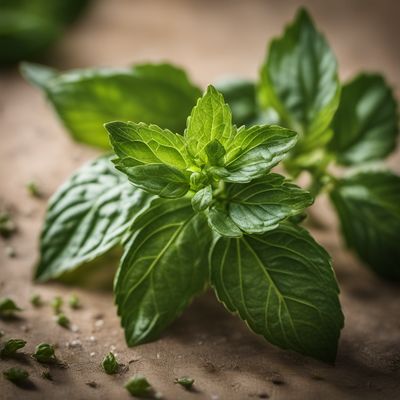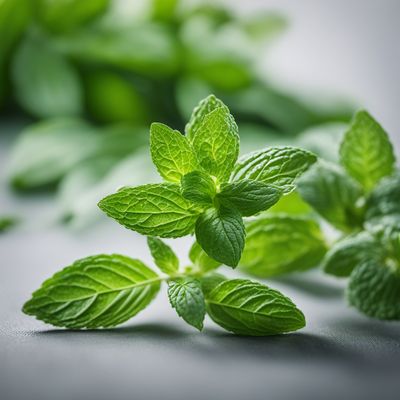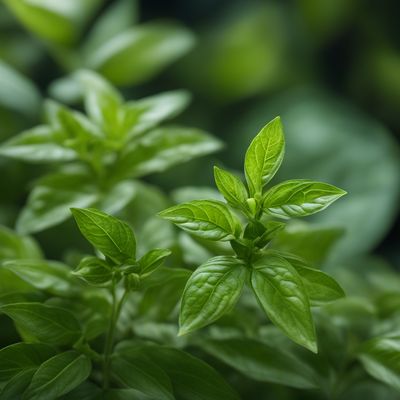
Ingredient
Basils and mints
The Aromatic World of Basils and Mints
Basils and mints are herbaceous plants that belong to the Lamiaceae family. They are known for their fragrant leaves, which are used in various cuisines around the world. Basils are characterized by their sweet and slightly peppery flavor, while mints offer a cool and refreshing taste. These herbs are often used fresh or dried to enhance the flavor of soups, salads, sauces, marinades, and desserts. They can also be infused into teas or used as garnishes for added aroma and visual appeal.
Origins and history
Basils and mints have a long history of culinary and medicinal use. Basil, native to India and other tropical regions of Asia, has been cultivated for over 5,000 years and is a staple in Italian cuisine. Mints, on the other hand, have a global presence and are found in various cultures, including Middle Eastern, Asian, and Mediterranean cuisines. Both herbs have been valued for their medicinal properties, such as aiding digestion, relieving headaches, and soothing respiratory ailments.
Nutritional information
Basils and mints are low in calories and are a good source of vitamins A and K. They also contain essential oils, such as eugenol and menthol, which contribute to their distinct flavors and potential health benefits. These herbs are known for their antioxidant and anti-inflammatory properties, making them a valuable addition to a healthy diet.
How to select
When selecting basils and mints, look for fresh leaves that are vibrant in color and free from wilting or discoloration. The leaves should have a strong aroma, indicating their freshness. Avoid leaves that are yellowed or have black spots. If purchasing potted plants, choose ones with healthy foliage and sturdy stems. It is best to buy basils and mints from reputable suppliers or grow them in your own herb garden for the freshest and highest quality.
Storage recommendations
To keep basils and mints fresh, trim the stems and place them in a glass of water, similar to a bouquet of flowers. Cover the leaves loosely with a plastic bag and store them in the refrigerator. Alternatively, you can wrap the herbs in a damp paper towel and place them in a resealable bag. This will help retain their moisture and prolong their shelf life. Fresh basils and mints can also be frozen by chopping the leaves and placing them in ice cube trays filled with water or oil.
How to produce
Basils and mints are relatively easy to grow at home. They thrive in well-drained soil and prefer a sunny location. Plant them in pots or directly in the ground, ensuring they receive regular watering. With proper care and maintenance, you can have a constant supply of fresh basils and mints for your culinary creations.
Preparation tips
Basils and mints can be used in a variety of dishes and cuisines. Basil is a key ingredient in Italian cuisine, where it is used in pesto, tomato-based sauces, and Caprese salads. It also pairs well with fruits like strawberries and melons. Mints are commonly used in Middle Eastern and Asian cuisines, adding a refreshing touch to dishes like tabbouleh, curries, and teas. They are also popular in desserts, such as mint chocolate chip ice cream and mint-infused chocolates. Additionally, both basils and mints can be used to make flavored oils, vinegars, and syrups.
Availability
Global
More ingredients from this category » Browse all

Greek bush basil
The Fragrant Herb of the Mediterranean: Greek Bush Basil

Basil
The King of Herbs

Mints
The Refreshing Herb

Asiatic pennywort
The Healing Herb: Unveiling the Wonders of Asiatic Pennywort

Lemon basil
The Zesty Herb: Unveiling the Delights of Lemon Basil

Chinese mesona
The Cooling Elixir

Lizard tail
The Enigmatic Delicacy: Lizard Tail

Thai basil
The Fragrant Herb: Thai Basil

Rice paddy herb
The Fragrant Gem

Holy basil
The Sacred Herb: Holy Basil

Lemon balm
The Zesty Herb: Lemon Balm

Vietnamese mint
The Zesty Herb

